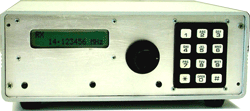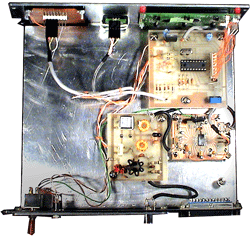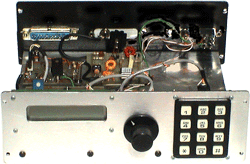I was very impressed by the DVFO -II kit that I purchased in 1998 from S & S Engineering. A very well designed kit with a clean o/p, meeting most of my requirements in the shack as a reference & accurate VFO.
Since S & S DVFO-II kit uses a 16C57 Microchip PIC, an OTP device, I decided to build another DDS, with the main motive of plunging into the world of PICs using a more friendlier 'flash' PIC - 16F84, also from Microchip.
PICs have become very popular in the Amateur world and use of these devices in our homebrew equipment is inevitable. A wealth of information pertaining to design & programming is available on the WEB - all for free!!.
Having done a little research on the best (easiest ??) path to take, I chose 16F84 for my experiments; built David Taits's TOPIC programmer that works off the PC parallel port; ordered 'Easy PIC 'n' & 'PIC 'n up the Pace' PIC books, read little but spent a lot of time browsing the 'Net looking for DDS related projects.
AD9850BRS with a maximum clock of 125MHz from Analog Devices is a popular DDS chip among Amateurs and is ideal for all HF work but it's successor - AD9851BRS, clocks upto 180MHz, has a 'x6' onboard clock multiplier, is better for HF and VHF projects. It also costs less than AD9850 and easily available at the time of this writing.
AD9851BRS DDS


Using the following main Components:
- 16F84/ 16F628
- AD9851 DDS
- 16x2 LCD Display
- 3x4 Keypad – Removed from a junk Cordless phone (also using RS 479-204 header)
- Rotary encoder
Features:
-
DC to 50 MHz output
-
1 Hz minimum resolution
-
Keypad entry of required frequency
-
Variable tuning rate dynamically using mechanical encoder

- Programmable offset
- Programmable up/ down tuning
- Last frequency memory on power-up
16F84/
16F628 PIC control, DDS and
Oscillator/ Output amp boards:
- Used ‘Kinsten’ GS (glass-epoxy single sided) positive acting presensitized PCB stock.
- Artwork done using Protel – Advanced PCB V2.7
- Artwork printed on HP Laser Jet 4 using HP Laser quality transparency
- PCBs made using UV exposure technique
16F628 DDS controller schematic